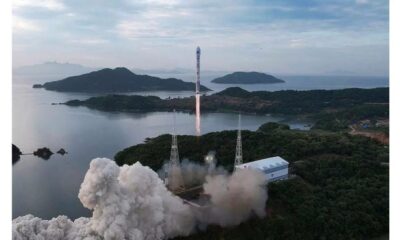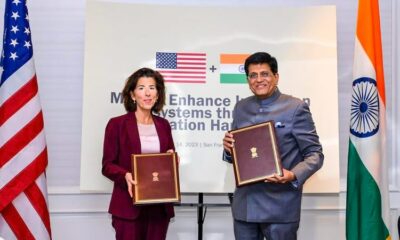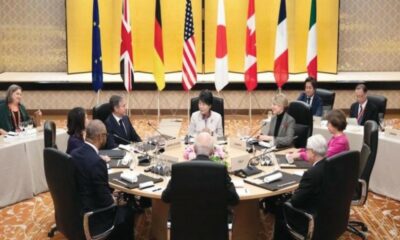In Japan, where consumers are already struggling with low incomes and are frantically trying to stretch their hard-earned yen, consumer prices are growing quickly.
Consumer prices were up 2.8% year over year in June, nearly matching the 3.0% increase in US prices.
Since the beginning of 2023, Japan’s inflation has momentarily exceeded that of the United States twice. It’s almost time to do that once more.
Speaking on the inflation rate, Jun Saito, a senior research fellow at the Japan Center for Economic Research, stated, “Inflation is around 2% to 3%, which is very high by our standards.”
The rate at which prices are rising has surprised me.
Mizuho Securities predicted a year ago that by now, inflation would be less than 2%. And at the time, it was expecting inflation to be less than 1% by year’s end.
Japan has been battling deflation for decades, but its progress has been patchy and typically more dependent on external factors; the COVID-19 aftermath contributed to the country’s most recent high of 4.3% in January 2023, at least in part.
Presently, price increases in Japan are deviating from the pattern by staying stable at the same time that inflation decreases globally. In Japan, it has been rather stable, rising from a previous low of 2.2% in January and staying at 2.8% for two consecutive months. In the United States, it has been gradually declining in recent months.
The June inflation report reveals unusual price increases for numerous household-favorite goods. Rice has increased 12.3% year over year, along with cuttlefish (8.7%), Niboshi dried tiny sardines (34.6%), milk (8.9%), potatoes (28.5%), cabbage (276.6%), and tomatoes (15.6%).
This is largely offset by the costs of other well-known goods. For the year, tofu increased by just 2.4% and natto by by 1.3%. Mayonnaise declines by 0.4%.
As earnings stagnate, citizens are starting to worry about prices.
Japan has historically had low wages. For many years, Japan has had the lowest average yearly salary among the Group of Seven major industrialized nations. The OECD reports that Japan’s average annual wage is $42,118, while the average annual wage for all member states is $55,420. Regarding average wages, Japan was placed between Poland and Italy in that class in 2023.
It’s feasible because of its low costs.
Because of its low to negative inflation rate, Japan is among the least expensive developed nations. Despite the low pay, it has also been able to maintain a high standard of living.
Elevated inflation modifies the formula.
Since the beginning of 2022, real earnings have been declining, and as buying power declines, consumers are beginning to feel the pinch.
Analysts argue that the 5.1% increase reached in the annual winter\ spring offensive salary negotiations is not very significant in the grand scheme of things because employees of smaller companies receive much less than the headline figure.
Saito stated, referring to the consumer price index, “this helped, but still the average wage relative to the CPI inflation rate is negative.”
The Bank of Japan is forced to hike rates in order to control inflation, but it must exercise caution so as not to slow down the economy and therefore undermine wage growth.
The administration needs to move cautiously as well. The yearly minimum wage debate should suggest a raise that is sufficient to maintain household stability while preventing an excessive number of small businesses from going out of business.
If the American economy works together, Japan’s pricing issues might resolve themselves. Rates may drop and the currency may appreciate versus the yen if slowing indicators in the US economy persist, relieving pressure on the central bank and containing price increases.
According to Asian Development Bank principal economist John Beirne, “a narrowing of the interest rate differentials between Japan and the United States would support the yen and alleviate the extent of imported inflation.”
As the U.S. Federal Reserve begins to reduce rates, DBS senior foreign exchange strategist Philip Wee predicted in a recent paper that the value of the yen would reach 150 by year’s end and 139 by December 2025.

 Entertainment4 weeks ago
Entertainment4 weeks ago
 Entertainment4 weeks ago
Entertainment4 weeks ago
 Entertainment4 weeks ago
Entertainment4 weeks ago
 Entertainment4 weeks ago
Entertainment4 weeks ago
 Entertainment3 weeks ago
Entertainment3 weeks ago
 Entertainment4 weeks ago
Entertainment4 weeks ago
 Uncategorized4 weeks ago
Uncategorized4 weeks ago
 Entertainment3 weeks ago
Entertainment3 weeks ago















 80%+ job placement rate for DigiRoads Classes students.
80%+ job placement rate for DigiRoads Classes students. Live Digital Marketing Projects – Gain direct experience running SEO, PPC, and social media campaigns.
Live Digital Marketing Projects – Gain direct experience running SEO, PPC, and social media campaigns.